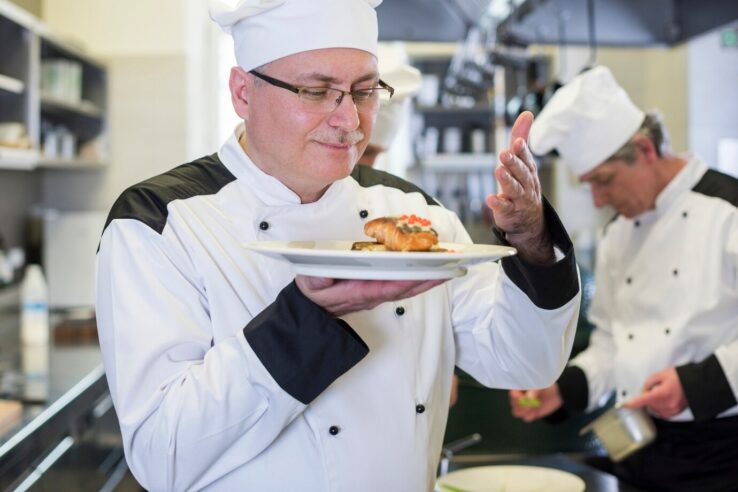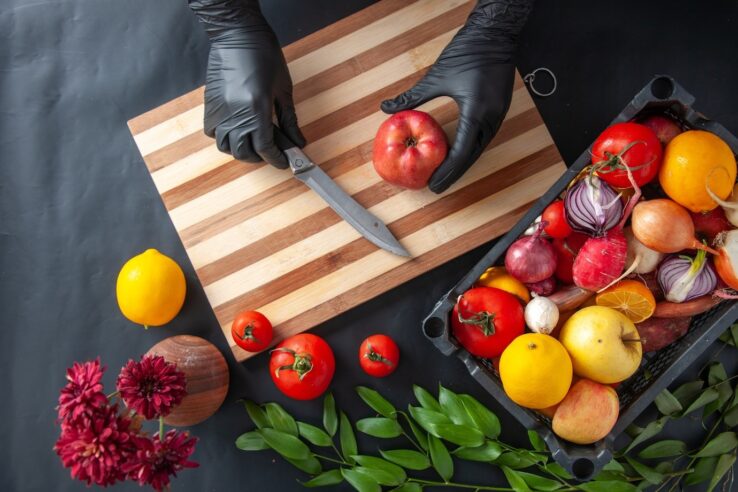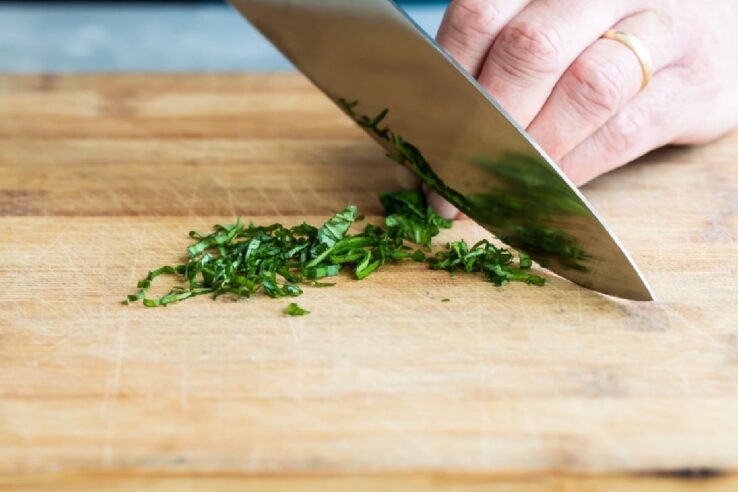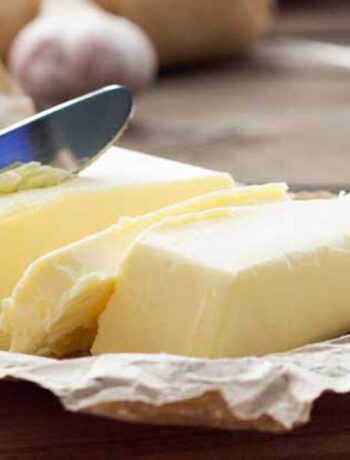In the culinary world, mastering knife skills sets experienced chefs apart from beginners. Whether you’re a home cook or aspiring to join the ranks of culinary professionals, honing your knife skills is an essential step toward efficient and enjoyable food preparation.
In this comprehensive guide, we’ll learn more about the role of the chef and cover the basic cuts that form the foundation of culinary expertise. We’ll explore each technique in detail, providing practical tips and insights to elevate your kitchen proficiency.
Chef Responsibilities and Their Multifaceted Role

Source: freepik.com
The role of a chef is both an art and a science, demanding a unique blend of creativity, precision, leadership, and technical expertise. A chef is not merely a cook; they are responsible for creating an immersive dining experience.
Their multifaceted role extends far beyond the kitchen stove and involves a myriad of chef responsibilities, from menu creation and kitchen management to leading a team and ensuring consistent, high-quality output.
Culinary Creativity
At the heart of a chef’s role is the ability to transform raw ingredients into culinary masterpieces. Creativity is expressed not only through flavor combinations but also in the artful presentation of dishes.
Chefs act as culinary visionaries, conceptualizing and executing innovative menus that delight the senses.
Menu Development
Chefs play a pivotal role in crafting menus that reflect the restaurant’s identity and appeal to the target audience. They balance flavors, textures, and culinary techniques to create a diverse and enticing selection of dishes.
A well-curated menu showcases a chef’s understanding of ingredients, trends, and customer preferences.
Kitchen Leadership

Source: freepik.com
Leadership is a cornerstone of the chef’s role. In a professional kitchen, the chef is responsible for guiding the culinary team, maintaining discipline, and fostering a collaborative and efficient work environment.
Effective leadership ensures a smooth workflow and a harmonious kitchen atmosphere.
Quality Control
Maintaining consistent quality is imperative for any reputable kitchen. Chefs are responsible for establishing and upholding high standards for every dish that leaves the kitchen.
This involves meticulous attention to detail, stringent quality control measures, and a commitment to delivering a memorable dining experience to every guest.
Training and Development
Chefs support and guide their kitchen team, helping them gain the needed skills to excel in their roles. Training sessions, showing recipes, and hands-on experiences help kitchen staff continuously improve.
Kitchen Management
Beyond the creative aspects, chefs manage the operational side of the kitchen. This involves inventory control, budget management, and optimizing kitchen processes to maximize efficiency.
Customer Interaction
Interacting with customers, whether through open kitchens or menu consultations, is another aspect of a chef’s role. Chefs who engage with customers gain valuable insights into preferences, feedback, and trends, enabling them to tailor their offerings to meet customer expectations.
The Importance of Knife Skills and Basic Cuts

Source: freepik.com
Before we dive into the specific cuts, it’s crucial to understand why knife skills are so integral to successful cooking.
- Efficient Food Preparation: Chefs often work against the clock in a high-paced kitchen environment. Excellent knife skills allow them to prep ingredients swiftly and efficiently, contributing to the timely execution of dishes. Precise cuts minimize prep time and ensure a seamless workflow.
- Cooking Consistency: Uniformity in ingredient size is crucial for consistent cooking. Whether dicing vegetables for a stew or creating even slices for a stir-fry, chefs with adept knife skills achieve a uniformity that translates into consistent cooking results.
- Aesthetics and Plate Presentation: Presentation is a vital aspect of a chef’s craft. Well-executed knife skills enable chefs to create visually appealing dishes, showcasing their dedication to precision and aesthetics. Uniform cuts contribute to the overall visual harmony of the plate.
- Enhancing Flavor: How ingredients are cut impacts how they release flavors during cooking. Chefs who understand the science behind various cuts can enhance the depth and complexity of flavors in their dishes. Properly cut ingredients contribute to a more harmonious and well-balanced culinary experience.
- Safety in the Kitchen: Safety is paramount in a bustling kitchen environment. Chefs with excellent knife skills are less prone to accidents, as they are more aware of the proper cutting techniques and the importance of maintaining sharp knives. This protects the chef and fosters a secure working environment for the entire kitchen team.
- Adaptability and Versatility: A chef’s repertoire is often measured by their ability to navigate a diverse range of cuisines and culinary techniques. Mastering the basic cuts makes a chef versatile, allowing them to adapt to different styles of cooking.
- Culinary Artistry: Knife skills are a form of culinary artistry, allowing chefs to express their creativity through the way they prepare and present ingredients. In other words, knife skills elevate a chef’s ability to turn simple ingredients into culinary works of art.
- Efficient Use of Resources: Proper cuts maximize the usable portion of ingredients, reducing food waste. Chefs with impeccable knife skills can get the most out of each ingredient, demonstrating efficiency.
Tips for Mastering the Essential Knife Cuts

Source: freepik.com
Mastering the essential knife cuts saves time and improves the aesthetics and flavors of your dishes. Plus, it helps chefs to achieve uniformity in ingredient size, ensuring even cooking and a polished presentation.
Let’s explore the essential knife cuts that every aspiring chef should master.
The Julienne Cut
The julienne cut involves creating long, thin strips of vegetables or fruits, resembling matchsticks. This cut is commonly used for ingredients like carrots, bell peppers, or zucchinis.
- The Procedure: Begin by trimming the ends of the vegetable to create a flat surface. Make parallel cuts, creating uniform planks. Stack the planks and make long, even strips by cutting perpendicular to the planks.
- The Purpose: Julienne-cut vegetables are often used for stir-fries, salads, and garnishes.
The Brunoise Cut
Building on the julienne cut, the brunoise involves transforming the thin strips into tiny, uniform cubes.
- The Procedure: Start with a julienne cut, creating matchsticks. Align the matchsticks and make small, precise cuts to achieve tiny cubes.
- The Purpose: The brunoise is perfect for incorporating small amounts of aromatic ingredients, like garlic or shallots, seamlessly into dishes.
The Dice (Small, Medium, Large)
Dicing is a versatile technique that involves cutting ingredients into uniform cubes. The size of the dice can vary from small to large.
- The Procedure: After julienning, align the strips and make perpendicular cuts to achieve cubes. Adjust the size of the cubes based on the desired outcome.
- The Purpose: Diced vegetables are used in a wide range of recipes, from soups and stews to sauces and salads.
The Mince
Mincing is the process of finely chopping ingredients like garlic, herbs, or ginger.
- The Procedure: Use a rocking motion with the knife to create small, uniform pieces. Ensure proper hand positioning and control for safety.
- The Purpose: Mincing enhances the flavor distribution in dishes, ensuring that the ingredients are evenly incorporated.
The Chiffonade

Source: freepik.com
The chiffonade involves finely slicing or shredding leafy greens or herbs into thin ribbons.
- The Procedure: Stack the leaves, roll them tightly, and make thin slices. This technique is particularly effective for basil, spinach, and other herbs.
- The Purpose: Chiffonade is often used for garnishes, salads, or to infuse delicate flavors into dishes.
The Bias Cut
Also known as the diagonal cut, the bias cut involves slicing vegetables at an angle for an elegant presentation.
- The Procedure: Position the knife at a 45-degree angle to the vegetable and make diagonal cuts. This cut is often used for root vegetables like carrots.
- The Purpose: The bias cut adds visual appeal to dishes and exposes more of the vegetable’s interior texture.
The Tourne (Turning)
The tourne, or turned vegetable, is a classic French cut that creates oval-shaped pieces.
- The Procedure: Begin by creating a seven-sided barrel shape. Trim the sides to form an oval, resulting in a small, football-shaped vegetable.
- The Purpose: While considered an advanced cut, the tourne is mainly used for aesthetic purposes, showcasing a chef’s skill and attention to detail.
The Bottom Line

Source: freepik.com
Mastering the basic cuts is the cornerstone of efficient food preparation, enhancing culinary skills and kitchen productivity. Knowing how to use knives well ensures precise, consistent, and safe food preparation.
Mastering knife skills is fundamental for chefs as it helps them streamline food preparation and form the basis for culinary excellence.




